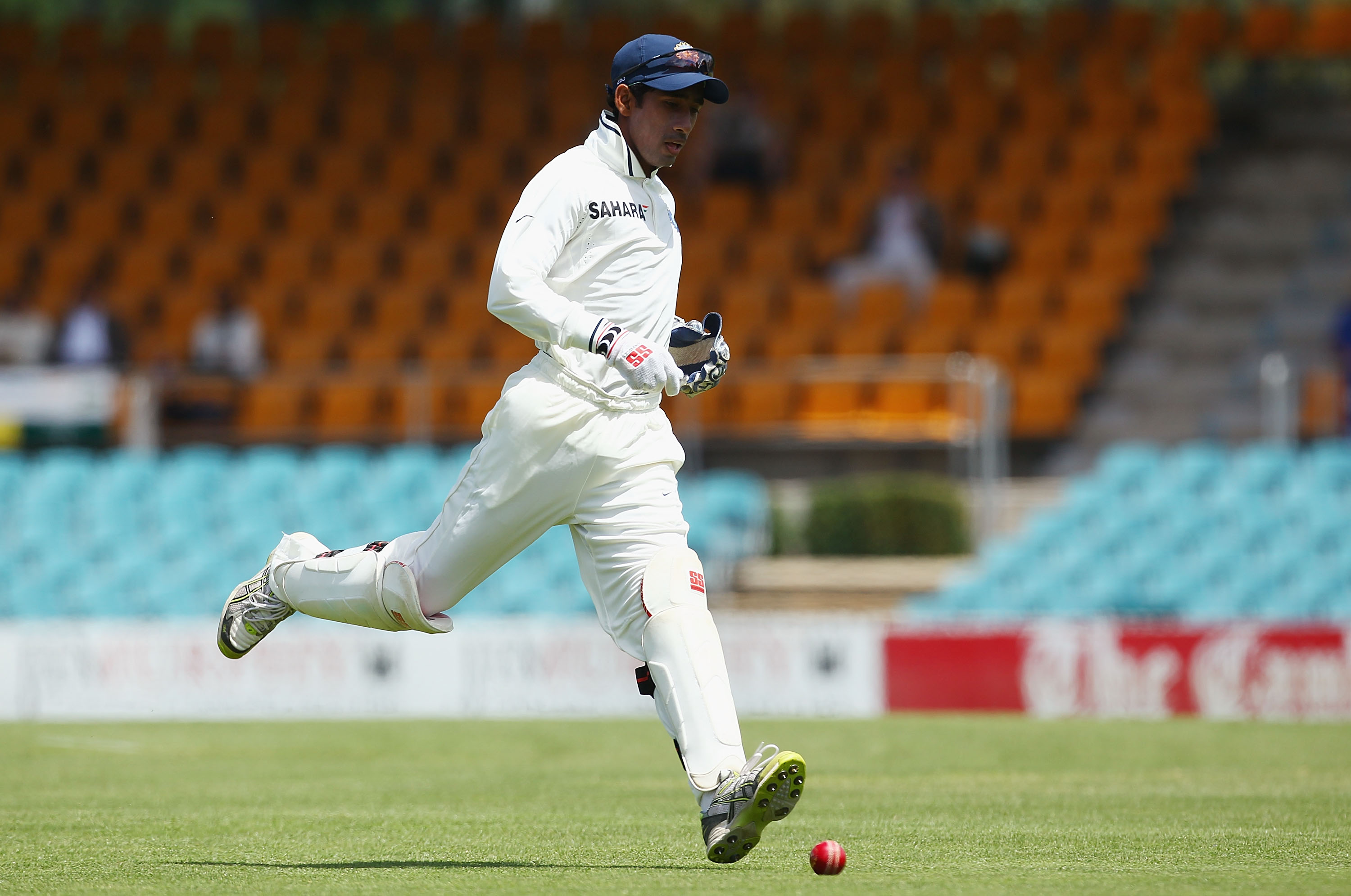The Rise of the Batsman in Wriddhiman Saha
Wriddhiman Saha is no Virat Kohli, Sachin Tendulkar or Rahul Dravid who could be expected to dig India out of trouble almost every time. Yet it was him, who ensured every time that India got to a competitive total when the team seemed like losing their way in both innings of the Kolkata Test.

With a monk-like temperament and rock-solid technique, Saha negated each and every spell the ball was playing on a tricky Eden Gardens pitch like a master of wizardry.
Wriddhiman Saha is not someone like MS Dhoni whose simple presence on the field would intimidate the opposition. No one can deny the fact that he is one of the best glovesmen in the world at present; maybe even better than his predecessor. But, it is his not-so-flashy and very orthodox batting approach that makes Saha almost an invisible entity in this glitzy, unconventional and creative era of T20 cricket. However, it is his conventionality, both behind and in front of the stumps that has gone on to become India’s X-Factor in recent times.
It wasn't just his batting that earned the 31-year-old plaudits, Saha was impeccable and flawless with his glove-work as well. Sometimes, the ball would bounce high, sometimes low, sometimes it would turn and at times it wouldn't; yet Saha's work behind the stumps was impeccable. The Bengali lad has long been criticized for his inability to contribute big runs with the bat at vital moments in a Test match. However, with his twin fifties and ‘Man of the Match’ award he made sure that the criticism has at least subdued for the time being.
The role of wicket-keepers has undergone a drastic transformation over the years. They are now judged on the basis of their ability to contribute in front of the stumps more than that behind the stumps. It is not that Saha can’t bat; at least his first class average of 44, a century on Ranji debut and a century in IPL 2014 final says so. But then, one needs to perform on the international level as well.
It is never easy for someone, who has always been a backup option for the National team, called up to the team only if there was an injury to a first team player, to come and fit into the squad straight away. But then again, Test cricket is all about playing in tough conditions; one has to prove his mettle in the least number of opportunities he gets. Unfortunately, Saha couldn’t! And he continued to be the reserve wicketkeeper for India over the years.
Finally when the door to the Indian team opened for him with MS Dhoni’s retirement; he was already 30! The better part of his career was already over with him being an understudy of Dhoni. Had he played regular international cricket more often, maybe he would have had five or six centuries to his name by
But on the brighter side, he still had seven or eight years of cricket left in him. Things looked pretty bright for him but little did Saha know about the poor performances that were to follow. All he had before the West Indies series in 2016 were a couple of
However, the selectors kept their unwinding faith in him intact. They wanted a reliable man behind the stumps standing up to their world-class spinners. What followed next was a century on the Caribbean tour, but that was not to be enough to silence critics as it was against a lowly West Indies side. But, one could see the change in Saha’s approach and mentality on that tour. And the change in Saha is apparent in the series against New Zealand; his twin fifties were just enough to send his critics into hibernation.

 © BCCI Media
© BCCI MediaMaybe Ashwin’s promotion up the order helped him a bit, maybe the fact that the spotlight was not on him to play the dual role of a keeper batsman helped him more. One cannot deny the fact that Saha had pretty big boots of MS Dhoni to fit into. The pressure was always on him; the fact that he was looked upon as a specialist batsman made it worse.
But, it seems like the revelation of Ashwin as a batsman helped Saha in more ways than one. Moreover, having Bhuvaneshwar Kumar coming in after him has helped Saha even more. Saha now has the freedom to play with a lot less pressure on him. Saha is now more like the anchor that India needed in the lower order. He has become someone who can hold the tail together and stretch the innings as far as possible and his role is going to be crucial in India’s Test dominance in the coming years ahead.
Saha soon will turn 32! All he has left maybe five more years of cricket or if he can maintain his fitness it can extend to even seven or eight years. However, the rise of the batsman in Saha is a welcome news for the Indian team with tougher challenges coming up in the season ahead. With the kind of promising innings he played against the Kiwis, the future ahead looks pretty bright for both Saha and India. And everyone would like to see the Bengal boy adding a few more feathers to his cap in the coming years ahead; playing a few more match-winning knocks, winning a few more 'Man of the Match' awards and may be silencing a few more critics.

Comments
Sign up or log in to your account to leave comments and reactions
0 Comments